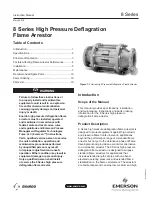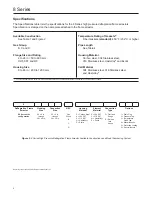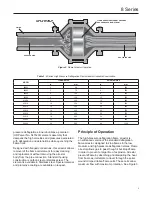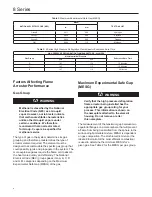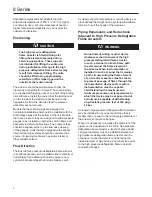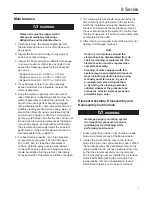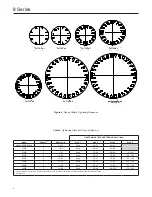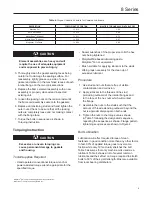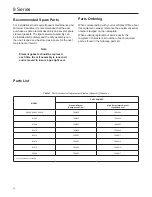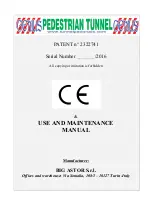
5
8 Series
Table 4.
8 Series High Pressure Deflagration Flame Arrestor, For All Sizes Pipe Length Rules
GAS GROUP “B”
GAS GROUP “C”
GAS GROUP “D”
Maximum length of pipe between
the flame arrestor and the ignition
source with a maximum of one 90°
bend. Multiple bends or any additional
obstructions are not recommended.
15 ft. / 4.5 m.
35 ft. / 10.6 m.
60 ft. / 18 m.
Maximum Initial Operating Pressure
This is the pressure of the system at or near static
flow conditions. High pressure deflagration can occur
more easily at higher system operating pressures than
at pressures near atmospheric. Elevated pressures
condense the ignitable gas giving the flame more
matter and energy to release thereby boosting the
flame heat intensity.
Endurance Burn Time
WARNING
!
Unlimited burning should not be allowed
in any flame arrestor, regardless of
its burn time rating. If burning can
occur for a period exceeding 2 minutes
starting at ambient temperature, it is
recommended that a temperature alarm
and shutdown system be installed. All
Enardo High Pressure Deflagration
Flame Arrestors are provided with
temperature probe taps for this purpose.
Endurance burn time is the time it takes for a stabilized
flame, at greatest heat saturation conditions, to
heat the arrestor element above the auto-ignition
temperature of the process gas stream resulting in
flame propagation through the arrestor. See Table 3 for
the endurance burn time of each gas group.
Pipe Lengths
Extended lengths of pipe allow the flame to advance
into more severe states of flame propagation such
as high pressure deflagration or detonations. High
pressure deflagration flame arrestors should be
installed in accordance with Table 4.
Bends and/or Flow Obstructions
CAUTION
For maximum safety, avoid bends
and flow obstructions within 10 pipe
diameters on the protected side of the
flame arrestor.
Bends in piping, pipe expansions and/or contractions,
valves, orifice plates or flow obstructing devices of
any kind contribute to turbulent flow. Turbulent flow
enhances mixing of the combustible gases, greatly
increasing the combustion intensity. This can result in
increased flame speeds, higher flame temperatures
and higher flame front pressures than would occur in
normal flow conditions.
Installation
WARNING
!
Always make sure that the system is
at atmospheric pressure and there is
no ignitable gas that could flash when
either installing or maintaining the unit.
Connection
Enardo high pressure deflagration flame arrestors
are normally provided with CL150 raised or flat face
flanges. Other flange such as CL300 are available
upon request. Make sure the companion flanges
installed in adjacent piping match the flanges on the
high pressure deflagration flame arrestors.

